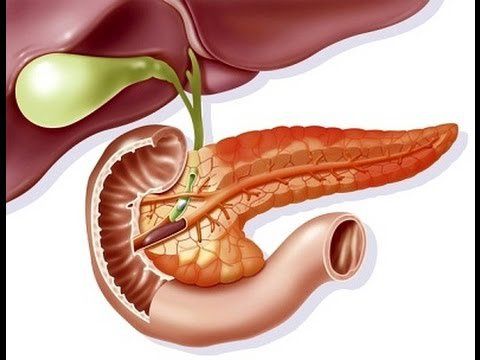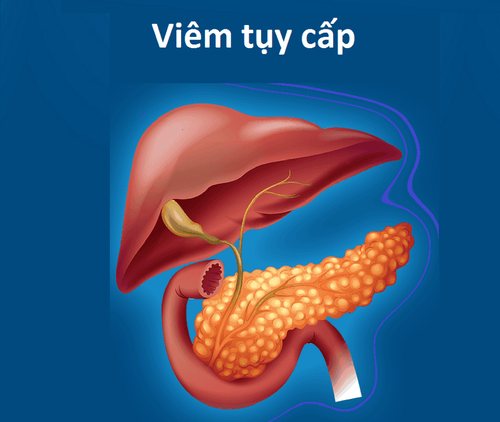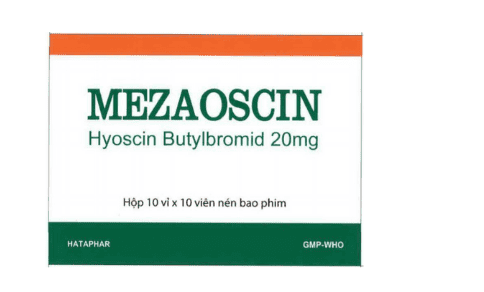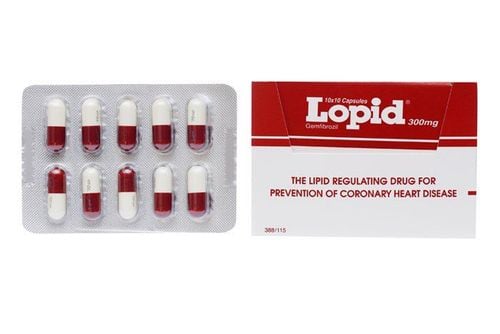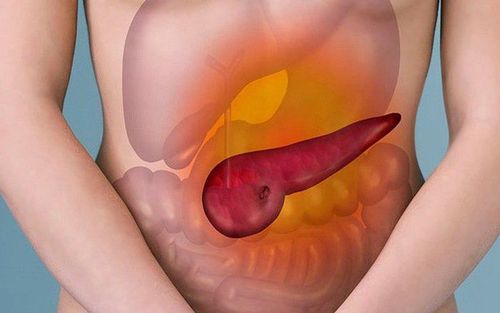This is an automatically translated article.
The article was professionally consulted by MSc Vu Van Quan - Department of General Surgery & Anesthesia - Vinmec Hai Phong International General Hospital.
The pancreas is an organ with both exocrine and endocrine functions. The common diseases in the pancreas are pancreatitis, pancreatic cancer, etc. Actively learning about these diseases helps each person to prevent and detect the disease early for more active and effective treatment.
1. Function of the pancreas
The pancreas is a leaf-shaped organ located behind the peritoneum, in front of the spine, between the duodenum and the spleen, behind the stomach, in front of the great blood vessels. The pancreas consists of three parts: the head, the waist, the body, and the tail of the pancreas. The pancreas is about 16 - 20 cm long, 4-5 cm high and 2 - 3 cm thick.The pancreas has an endocrine function (secreting the hormones insulin, glucagon, somatostatin, ...) and an exocrine function (secreting digestive enzymes). Digestive enzymes and hormones produced by the pancreas travel from the pancreas to the duodenum (first part of the small intestine) through the pancreatic duct. The part of the pancreas that produces hormones is called the endocrine pancreas and the part that produces digestive enzymes is called the exocrine pancreas.
2. Common pancreatic diseases
2.1 Pancreatitis Pancreatitis is a disease in which the pancreas becomes inflamed. Pancreatic damage occurs when digestive enzymes are activated before they are released into the small intestine and begin to attack the pancreas.
Acute pancreatitis: is a sudden attack that causes pancreatitis and is often associated with severe upper abdominal pain. The pain can be severe and last several days. Other symptoms of acute pancreatitis include nausea, vomiting, diarrhea, bloating, and fever.
The most common cause of acute pancreatitis is gallstones. Other causes include chronic alcohol consumption, genetic conditions, trauma, medications, infections, electrolyte abnormalities, high lipid levels, hormonal abnormalities, or other unknown causes.
The medical treatment: fasting, aggressive fluid resuscitation, pain relief, ... showed good results. Most patients with acute pancreatitis recover completely.
Chronic pancreatitis: Chronic pancreatitis is a persistent inflammation of the pancreas, a progressive disorder involving destruction of the pancreas.
The disease is more common in men and usually develops in people between the ages of 30 and 40. Initially, chronic pancreatitis can be confused with acute pancreatitis because the symptoms are similar. The most common symptoms are upper abdominal pain and diarrhea. As the disease becomes more chronic, the patient may become malnourished and lose weight. If the pancreas is destroyed in the later stages of the disease, the patient may develop diabetes mellitus.
It usually occurs after an episode of acute pancreatitis. Alcohol is another big cause. Damage to the pancreas from heavy alcohol use may not cause symptoms for many years, but then a person may suddenly develop severe symptoms of pancreatitis. Additional causes include cystic fibrosis and other genetic disorders of the pancreas.
The treatment of chronic pancreatitis depends on the symptoms. Most of the basic therapy is pain management and nutritional support. Oral pancreatic enzyme supplements are used to aid in the digestion of food. Patients with diabetes need insulin to control blood sugar. Avoiding alcohol is central to therapy.
How to prevent pancreatitis:
Limit alcohol consumption; Detection and treatment of gallstones, pancreatic stones; Patients with hypertriglyceridemia need regular treatment, with reasonable dietary control.

Lạm dụng rượu bia là một trong những nguyên nhân gây viêm tụy cấp
2.2 Pancreatic cancer Pancreatic cancer is cancer that forms in certain cells of the pancreas. Up to 95% of patients with pancreatic cancer originate from the exocrine pancreas. Tumors can also form in the endocrine pancreas but are relatively uncommon and are usually benign.
Causes of the disease Genetic factors: There is evidence that pancreatic cancer is related to family factors. Other genetic changes occur as a result of exposure to an environmental agent, for example, tobacco. Environmental toxins: Substances that can increase the risk of pancreatic cancer include some: pesticides, dyes, chemicals used in metallurgy, ... When the body is exposed to carcinogens , free radicals are formed. These cells damage and affect their ability to function normally. The result can be cancerous growths. Other medical factors: Age is an important risk factor, especially after age 60. Cirrhosis, hepatitis, ... Gastritis with Helicobacter pylori (H. pylori) Diabetes Chronic pancreatitis Smoking or exposure to tobacco smoke Being overweight Diet high in red meat and fat and less vegetables Long-term and heavy drinking, which can lead to chronic pancreatitis, a risk factor for pancreatic cancer.

Béo phì là yếu tố nguy cơ dẫn đến ung thư tụy
Symptoms Pancreatic cancer is often called a "silent" disease, because symptoms don't appear until later.
However, as the cancer grows, there may be:
Abdominal pain, which may spread to the back Unexplained weight loss, often accompanied by: Anorexia Bloating, bloating Diarrhea, dark colored stools or defecating fat floating on the water Jaundice, yellow eyes Itching the skin of the palms and feet However, some other diseases can cause similar symptoms, so doctors often cannot diagnose cancer pancreas until later.
Treatment methods The treatment of pancreatic cancer mainly depends on the location, size, stage of the cancer as well as the general health of the patient. Common treatments are:
Surgical removal of the tumor: Removing the cancer and surrounding healthy tissue to prevent the pancreatic cancer from coming back. However, because pancreatic cancer is difficult to detect early, up to 80% of patients cannot be treated with surgery because the disease has entered the late stage. Radiation therapy: Radiation therapy is a treatment that uses high-energy radiation to target the tumor to kill cancer cells or to stop them from growing. Radiation therapy to relieve pain, jaundice and contribute to preventing disease recurrence if radiation therapy is performed after surgery. For pancreatic cancer, radiation therapy is often used in combination with chemotherapy. Chemotherapy: Kills or slows the growth of cancer cells. Chemotherapy can be used as adjuvant treatment before or after surgery. Sometimes, chemotherapy is also combined with radiation therapy. After treatment, patients need to be periodically examined because pancreatic cancer has a high risk of recurrence. After surgery, the patient also needs to rest, have a healthy, scientific diet and may need to supplement with digestive enzymes or insulin if necessary.
Common diseases of the pancreas can cause unpredictable consequences if not detected and treated early. Therefore, if there are symptoms of pancreatic disease, the patient should go to the doctor soon for an accurate diagnosis and timely treatment plan.

Bệnh nhân ung thư tụy cần có chế độ ăn uống lành mạnh, khoa học
From October 2019, Vinmec Hai Phong Hospital welcomes leading experts in Gastroenterology - Liver, bile and pancreas from 108 Military Central Hospital to visit periodically for diseases of the stomach, esophagus, and colorectal colon, liver, spleen, biliary tract, pancreas, anal fistula, rectal prolapse, gastrointestinal cancer screening... At the request of the patient, Senior Doctor Le Van Thanh - Head of Liver Surgery Department Pancreatic biliary tract – 108 Military Central Hospital will directly operate. Schedule on Saturday, surgery on Sunday so that customers can easily arrange their personal time and have more time to recover after the intervention.





